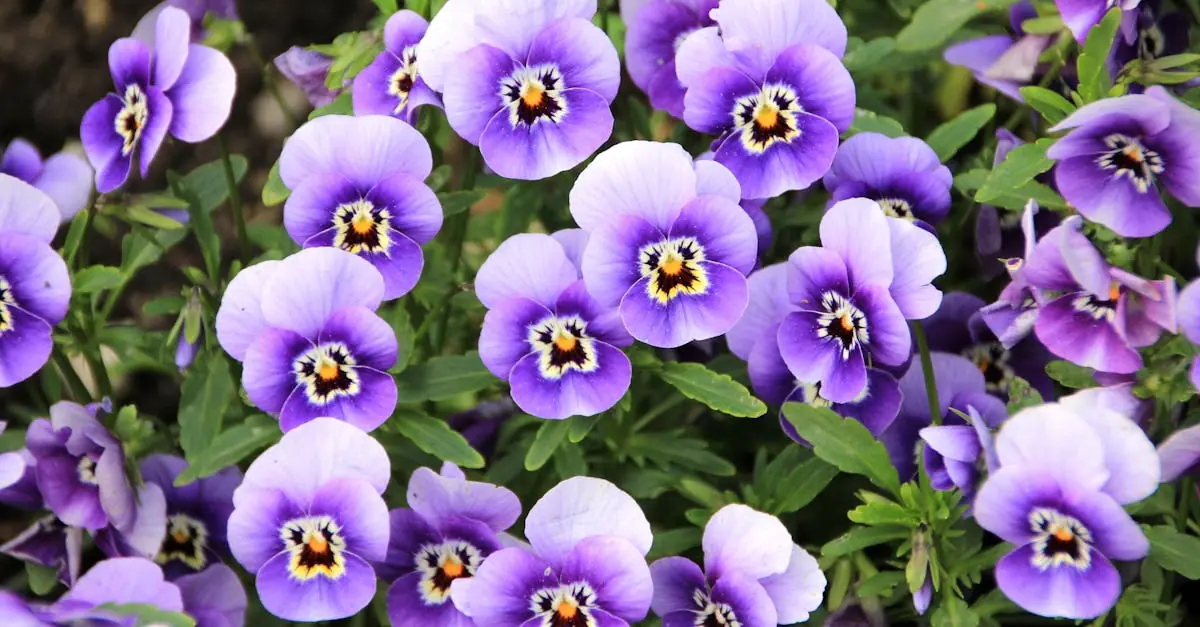Table of Contents
ToggleImagine stepping into your backyard and being greeted by a vibrant explosion of colors, buzzing bees, and fluttering butterflies. A wildflower garden isn’t just a feast for the eyes; it’s a sanctuary for nature and a canvas for creativity. Designing a backyard wildflower garden is like hosting a never-ending garden party—without the awkward small talk and questionable potato salad.
Overview of Backyard Wildflower Garden Design
Creating a backyard wildflower garden involves careful planning and design. Homeowners benefit from selecting native wildflowers that thrive in local climates. Consideration of soil conditions, light exposure, and water needs ensures successful growth.
Choosing a diverse array of plants enhances visual interest and supports a range of pollinators. Popular options include coneflowers, black-eyed Susans, and bee balm. Each flower provides unique colors and textures that attract beneficial insects.
Spacing plants properly promotes healthy air circulation and reduces competition for nutrients. Arranging taller species in the back and shorter ones in the front creates a balanced look. Grouping flowers in clusters also produces a natural appearance, resembling wild meadows.
Incorporating pathways or seating areas adds functionality and invites enjoyment. Materials for pathways can include gravel, wood chips, or stepping stones. Each element contributes to an inviting atmosphere for relaxation and observation of nature.
Maintenance of the wildflower garden requires limited effort. Regular weeding and occasional watering help keep the plants healthy during dry spells. Allowing some flowers to go to seed supports future growth and helps sustain local wildlife.
Integrating decorative features like birdbaths or feeders enhances the garden’s appeal. These additions attract birds that further enrich the ecosystem. With thoughtful design, a backyard wildflower garden becomes a vibrant habitat and a beautiful retreat.
Benefits of Wildflower Gardens
Wildflower gardens offer numerous advantages for both the environment and aesthetics. These gardens promote biodiversity and enhance outdoor spaces.
Environmental Impact
Wildflower gardens support local ecosystems. They provide critical habitats for beneficial insects like bees and butterflies. Pollinators thrive in these diverse environments, leading to increased plant reproduction. Native species contribute to soil health, preventing erosion and improving water retention. Reduced need for chemical fertilizers arises from planting wildflowers. Natural pest control occurs through the presence of various insects. Overall, these gardens play a significant role in maintaining ecological balance.
Aesthetic Appeal
Colorful displays characterize wildflower gardens. Vibrant blooms attract the eye and enhance the landscape. Various species bloom throughout the seasons, ensuring that gardens remain lively year-round. Their natural look blends well with other landscape elements. Unconventional shapes and arrangements create visual interest. Homeowners enjoy personal expression through unique combinations of colors and textures. Backyards transform into inviting spaces that encourage relaxation and connection with nature.
Key Elements of Design
Creating a captivating wildflower garden hinges on careful planning. Several key factors play a crucial role in designing a vibrant and sustainable space.
Selecting the Right Location
Location directly influences the growth and health of wildflowers. He or she should choose a site that receives ample sunlight, ideally at least six hours per day. Assessing soil quality stands important, as well-draining soil promotes robust plant development. Nearby trees and structures may cast shadows, which can hinder growth, so ensuring adequate light is critical. Areas that collect water can lead to root rot, so avoiding low-lying spots is wise. Ultimately, a well-chosen location sets the foundation for a flourishing garden.
Choosing Native Wildflowers
Opting for native wildflowers maximizes the success of the garden. These plants are well-adapted to local climate conditions, with established growth patterns that ease maintenance. Including species such as coneflowers or black-eyed Susans not only attracts pollinators but also supports biodiversity. Selecting a mix of blooming times ensures a continuous display of color throughout the seasons. By integrating various heights and colors, one can create visual interest and a dynamic landscape. Native wildflowers flourish with less water and minimal fertilizer, making them eco-friendly choices for any backyard.
Planning Your Garden Layout
Planning the layout of a backyard wildflower garden shapes its overall effectiveness. Thoughtful arrangement enhances both functionality and visual appeal.
Designing for Seasonal Bloom
Selecting wildflowers that bloom in different seasons ensures vibrant color throughout the year. Early bloomers like crocuses and daffodils can start the show, while late bloomers such as asters and goldenrods maintain interest as summer fades. Grouping flowers by blooming time creates a dynamic landscape that attracts pollinators consistently. Diversity in plant height also adds depth, guiding the eye across the garden. This layered planting approach supports various wildlife, encouraging them to visit throughout the seasons.
Incorporating Pathways and Seating
Creating pathways adds accessibility and invites exploration in the garden. Material choices like gravel or mulch blend seamlessly with natural elements. Seating areas provide homeowners and visitors a place to relax and appreciate the beauty. Positioning these spaces near flower clusters enhances enjoyment and allows for observation of pollinators at work. Thoughtful integration of pathways and seating fosters an inviting atmosphere that encourages connection with nature. Attention to layout optimizes the garden experience, promoting tranquility and interaction.
Maintenance Tips for Wildflower Gardens
Maintaining a wildflower garden involves simple yet effective practices. Emphasizing ongoing care ensures vibrant blooms and ecological health.
Watering and Fertilizing
Watering depends on local climate and specific plant needs. During dry spells, providing deep watering promotes root health. Quick-draining soil benefits from less frequent, thorough watering sessions. Native wildflowers typically thrive without excessive fertilization since they adapt to local nutrients. Adding organic compost in spring enhances soil quality and supports growth. Observing plants regularly helps assess their hydration and nutrient status. Over-fertilizing may lead to excessive foliage growth at the expense of flowers.
Controlling Weeds and Pests
Weeds can compete with wildflowers for resources, so regular inspections are essential. Pulling weeds by hand reduces their presence without harming the ecosystem. Mulching around plants suppresses weed growth and retains soil moisture. Encouraging beneficial insects like ladybugs assists in pest control, as they naturally reduce harmful populations. Monitoring for signs of pests or diseases ensures timely intervention. Avoiding chemical pesticides supports the health of pollinators crucial to garden success. A balanced approach to weed and pest management maintains the garden’s beauty and functionality.
Creating a backyard wildflower garden is a rewarding endeavor that combines beauty and ecological benefits. By thoughtfully selecting native plants and designing the layout, homeowners can cultivate a vibrant space that attracts pollinators and enhances the landscape. The garden becomes a sanctuary not just for flowers but also for wildlife, promoting biodiversity and contributing to a healthier environment.
With minimal maintenance required, these gardens offer a sustainable way to enjoy nature. Incorporating elements like pathways and seating areas further enriches the experience, inviting relaxation and exploration. A wildflower garden is more than just a visual delight; it’s a celebration of life that fosters a deeper connection with the natural world.





